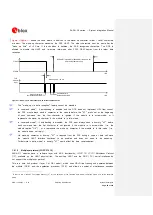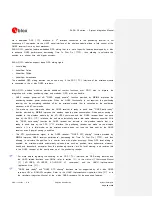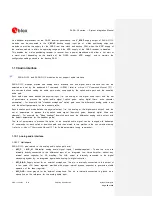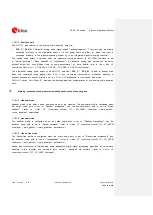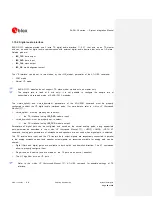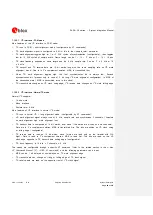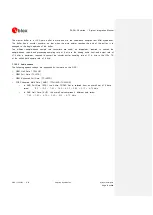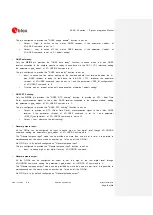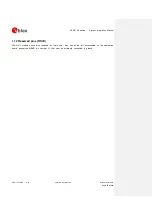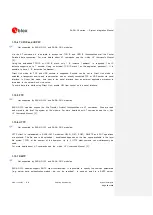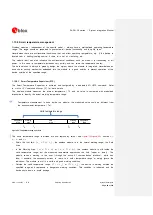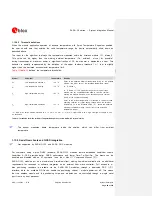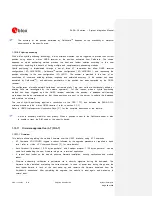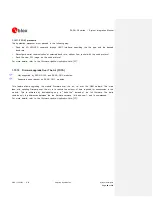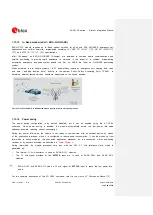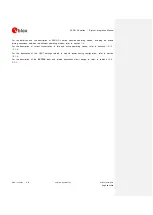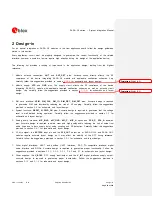
SARA-G3 series - System Integration Manual
UBX-13000995 - R06
Objective Specification
System description
Page 76 of 218
1.13
System features
1.13.1
Network indication
Not supported by SARA-G300 and SARA-G310 modules.
The
GPIO1
, or the
GPIO2
,
GPIO3
and
GPIO4
alternatively from their default settings, can be configured
to indicate network status (i.e. no service, registered home network, registered visitor network, voice or
data call enabled), by means of the AT+UGPIOC command.
For the detailed description, refer to section 1.11 and to
u-blox AT Commands Manual [2], GPIO
commands.
1.13.2
Antenna detection
Not supported by SARA-G300 and SARA-G310 modules.
ANT_DET
pin of SARA-G350 modules is an Analog to Digital Converter (ADC) provided to sense the
presence of an external antenna when optionally set by the +UANTR AT command.
The external antenna assembly must be provided with a built-in resistor (diagnostic circuit) to be
detected, and an antenna detection circuit must be implemented on the application board properly
connecting the antenna detection input (
ANT_DET
) to the antenna RF interface (
ANT
).
For more details regarding feature description and detection / diagnostic circuit design-in refer to sections
1.7.2 and 2.3.2, and to the
u-blox AT Commands Manual [2].
1.13.3
Jamming detection
Not supported by SARA-G300 and SARA-G310 modules.
In real network situations modules can experience various kind of out-of-coverage conditions: limited
service conditions when roaming to networks not supporting the specific SIM, limited service in cells which
are not suitable or barred due to operators’ choices, no cell condition when moving to poorly served or
highly interfered areas. In the latter case, interference can be artificially injected in the environment by a
noise generator covering a given spectrum, thus obscuring the operator’s carriers entitled to give access to
the GSM service.
The Jamming Detection Feature detects such “artificial” interference and reports the start and stop of such
conditions to the client, which can react appropriately by e.g. switching off the radio transceiver to reduce
power consumption and monitoring the environment at constant periods.
The feature detects, at radio resource level, an anomalous source of interference and signals it to the
client with an unsolicited indication when the detection is entered or released. The jamming condition
occurs when:
The module has lost synchronization with the serving cell and cannot select any other cell
The band scan reveals at least n carriers with power level equal or higher than threshold

